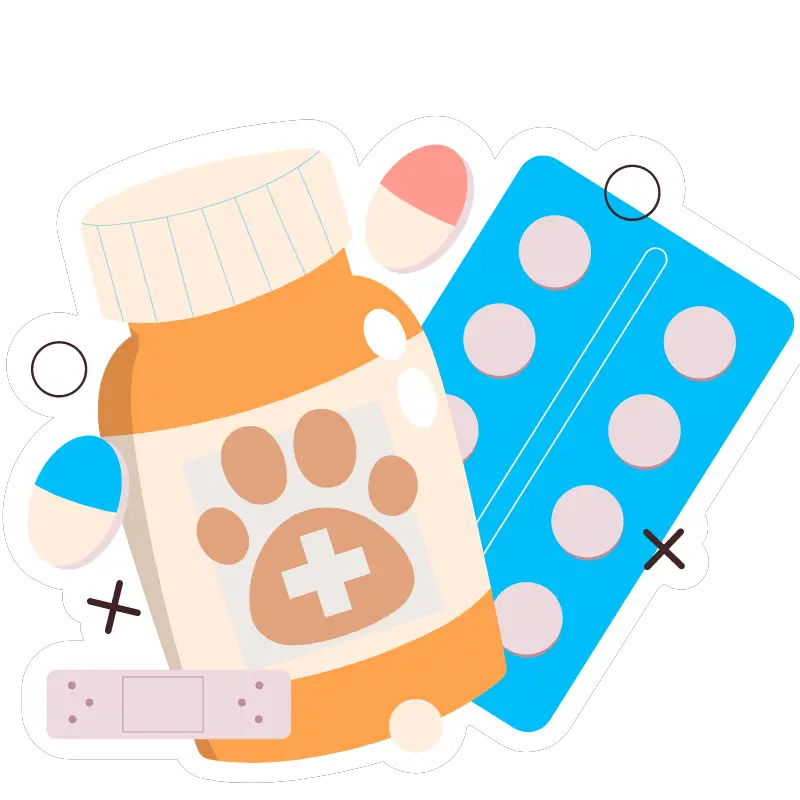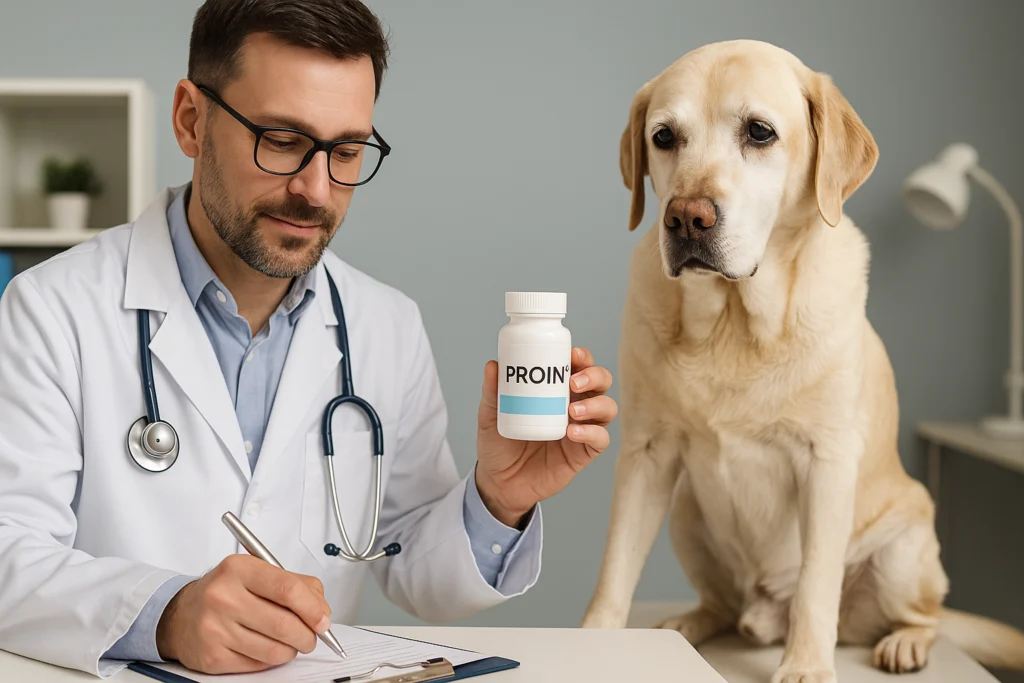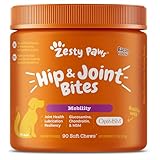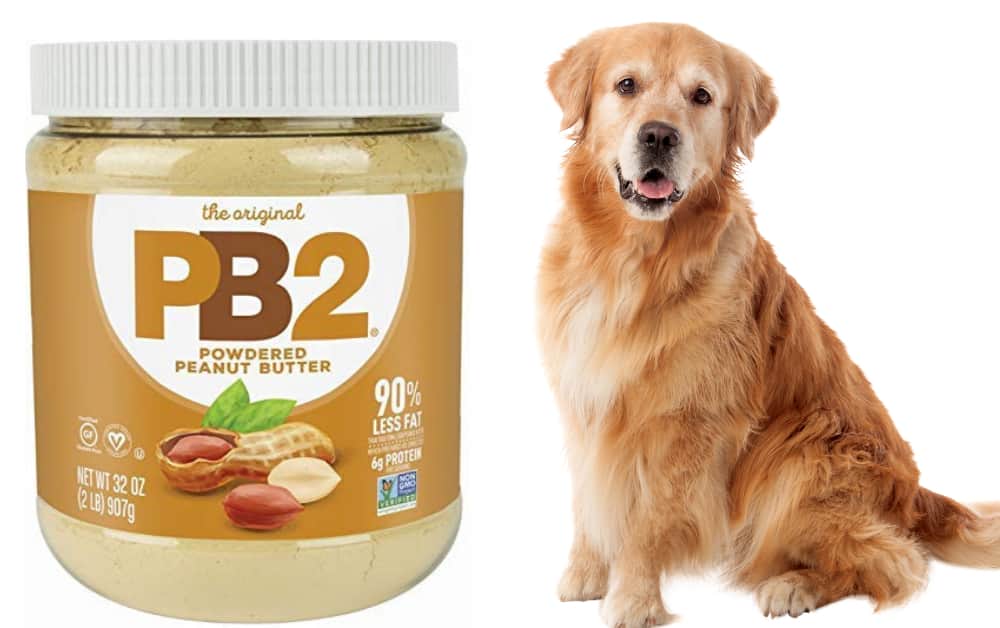When it comes to treating canine urinary incontinence, PROIN® is often a go-to medication prescribed by veterinarians. But just like any medication, it’s important to understand not only what it does but also how to use it safely and effectively.
In this comprehensive guide, we’re breaking down everything you need to know about PROIN®—from its benefits and usage to its exact dosage by weight and possible side effects. Whether you’re a pet parent navigating a new diagnosis or someone just looking to learn more, this guide covers it all.
Proin® Dosage For Dogs

-
Ideal Dose: 1-1.5 mg/kg (0.4-0.6 mg/lb).
-
Uses: For treating urinary incontinence in dogs.
-
FDA Approved: Proin® is an FDA approved.
-
Common Brand Names: Proin®, Propalin®, Cystolamine®, Uricon®, Uriflex-PT®
-
Variants: Tablets, Liquid.
-
Storage & Handling: Room Temperature.
-
Administration: Every 8 to 12 hours.
What is PROIN®?
PROIN® is the brand name for phenylpropanolamine hydrochloride, a sympathomimetic drug commonly used in veterinary medicine to treat urinary incontinence in dogs. It works primarily by increasing urethral sphincter tone, helping dogs who involuntarily leak urine—especially when they’re resting or sleeping.
This medication has been a reliable solution for many years and continues to be one of the most effective ways to manage urinary leakage in both spayed females and senior dogs.
Proin Dosage For Dogs
For urinary incontinence in dogs, the ideal PROIN® dosage is 1 to 1.5 mg/kg (0.4–0.6 mg/lb) of body weight, given orally every 8 to 12 hours. However, dosages may be adjusted based on the dog’s response to treatment and any side effects observed.
It is crucial to follow the veterinarian’s instructions carefully and to stay within the prescribed dosage under their guidance.
PROIN for Dogs Dosage Chart By Weight
| Dog Weight (lbs) | Dog Weight (kg) | PROIN® Dosage Low Range (mg/lb) | PROIN® Dosage High Range (mg/lb) |
|---|---|---|---|
| 5 | 2.27 | 0.91 | 1.36 |
| 10 | 4.54 | 1.82 | 2.73 |
| 15 | 6.80 | 2.73 | 4.09 |
| 20 | 9.07 | 3.64 | 5.45 |
| 25 | 11.34 | 4.55 | 6.82 |
| 30 | 13.61 | 5.46 | 8.18 |
| 35 | 15.88 | 6.37 | 9.55 |
| 40 | 18.14 | 7.28 | 10.91 |
| 45 | 20.41 | 8.19 | 12.27 |
| 50 | 22.68 | 9.10 | 13.64 |
| 55 | 24.95 | 10.00 | 15.00 |
| 60 | 27.22 | 10.91 | 16.36 |
| 65 | 29.48 | 11.82 | 17.73 |
| 70 | 31.75 | 12.73 | 19.09 |
| 75 | 34.02 | 13.64 | 20.45 |
| 80 | 36.29 | 14.55 | 21.82 |
| 85 | 38.56 | 15.45 | 23.18 |
| 90 | 40.82 | 16.36 | 24.55 |
How PROIN® Works
What makes PROIN® so effective is its ability to mimic the actions of adrenaline in the body. It stimulates alpha-adrenergic receptors, which are found in the smooth muscle of the bladder sphincter.
This stimulation results in tighter muscle tone, preventing involuntary urine leakage.
The drug does not cure the underlying issue, but it manages the symptoms so your dog can live more comfortably—and your house can stay dry.
Why PROIN is Prescribed for Dogs
Canine Urinary Incontinence Explained
Urinary incontinence in dogs isn’t just a nuisance; it can be a sign of underlying health issues and a major stressor for both pets and their owners. It’s characterized by the involuntary leakage of urine, and it’s most commonly seen in middle-aged to older spayed female dogs. However, intact females and even male dogs can experience this condition as well.
There are many causes for incontinence in dogs including:
But by far, the most common type of incontinence treated with PROIN® is urethral sphincter mechanism incompetence (USMI). This occurs when the muscles around the urethra aren’t tight enough to keep urine in the bladder.
Dogs suffering from USMI may dribble urine while lying down, sleeping, or even walking. You might notice wet spots where your dog was resting, or an odor that doesn’t go away even with cleaning. It’s not their fault—they simply can’t control it. And that’s where Prion steps in.
Dog Conditions Treated by PROIN®
Though PROIN® is mainly prescribed for USMI, it’s also occasionally used in other scenarios. Here are some of the key conditions it helps manage:
- Hormone-responsive incontinence: Especially common in spayed females due to reduced estrogen levels.
- Neurogenic bladder dysfunction: Where nerve damage has affected normal bladder control.
- Stress-related incontinence: Though less common, anxiety and stress can sometimes contribute to loss of bladder control.
- Post-surgical incontinence: Following surgeries involving the urinary tract or reproductive organs.
It’s worth noting that PROIN® is not effective for treating incontinence due to infections, bladder stones, or tumors. That’s why accurate diagnosis by a vet is essential before starting treatment. In most cases, a vet will perform a physical exam, urinalysis, and sometimes an ultrasound to determine the root cause of your dog’s leakage.
Best Practices for Giving PROIN®
Giving medication to a dog can feel like a wrestling match sometimes, especially if your pup is a picky eater or generally suspicious of anything new. Luckily, PROIN® is available in several formulations, including chewable tablets that many dogs take like a treat. If you’re using the chewable version, simply offering it along with their regular food or wrapped in a favorite snack like peanut butter often does the trick.
But beyond just how to give it, timing and consistency are crucial. Administering PROIN® at the same time each day ensures stable levels in your dog’s system. This helps maintain its efficacy and minimizes side effects. For dogs on the twice-daily regimen, try spacing doses out about 12 hours apart—say, at 8 a.m. and 8 p.m.
Here are some key best practices:
- Always follow the vet’s prescription: Never adjust the dose on your own.
- Use reminders: Set alarms or use a medication tracking app.
- Avoid double dosing: If you miss a dose, only give it if it’s been less than 4 hours since the scheduled time.
- Watch for side effects: Increased thirst, anxiety, or changes in appetite should be noted.
- Don’t skip doses: This can reduce the effectiveness and make symptoms return quickly.
And here’s an insider tip—if you’re ever in doubt about whether your dog swallowed the pill, you can ask your vet about pill pockets or flavored pastes that hide the tablet and encourage your dog to chew without suspicion.
PROIN® (Phenylpropanolamine Hydrochloride) Side Effects in Dogs
Like any medication, PROIN® isn’t without its risks. Most dogs tolerate it well, but some might experience mild to moderate side effects. The most frequently reported ones include:
- Increased thirst and urination: You might notice your dog drinking more water or needing more bathroom breaks.
- Restlessness or hyperactivity: Due to its stimulant properties, dog proin can make some canines a little jittery or excitable.
- Loss of appetite: Less common, but worth watching.
- Vomiting or diarrhea: These GI symptoms are typically short-lived but should be monitored.
- Elevated blood pressure or heart rate: Particularly in senior dogs or those with existing heart conditions.
These symptoms are generally manageable, but it’s essential to report them to your vet. They may recommend adjusting the dosage, switching to the extended-release formula, or even trying a different medication entirely if side effects persist.
It’s worth noting that dogs with pre-existing conditions like glaucoma, diabetes, or cardiovascular disease should use PROIN® only under strict veterinary supervision. The stimulating nature of the drug can worsen these conditions.
When to Contact Your Vet
While mild side effects can often be observed at home, some symptoms require immediate medical attention. Contact your veterinarian immediately if your dog shows signs such as:
- Severe vomiting or diarrhea lasting more than 24 hours
- Excessive panting or labored breathing
- Sudden collapse or fainting
- Aggression or extreme hyperactivity
- Pale gums or weakness
It’s also wise to schedule regular follow-up visits. Long-term use of PROIN® can sometimes affect liver or kidney function, so blood work every 6 to 12 months is often recommended.
In emergencies, always have your vet’s number handy, and if it’s after hours, know the location of the nearest 24-hour veterinary clinic. It’s always better to be overly cautious when your pet’s health is at stake.
Tips for Making Medication Easier for Your Dog
Even with chewables, not every dog is cooperative. If your furry friend has a sixth sense for medication and spits out pills like a magician pulls rabbits out of a hat, try these tried-and-true techniques:
- Pill Pockets: These soft treats have a hollow center perfect for concealing tablets. Dogs usually gobble them down without a second thought.
- Mix with Wet Food: Crushing the tablet and mixing it into canned food can disguise the smell and taste. Just confirm with your vet if it’s safe to crush your specific PROIN® formula.
- Syringe Method: If your dog absolutely refuses to eat it, you can crush and mix the medication with water and administer it using an oral syringe. This should be a last resort, and again, confirm with your vet before doing this.
- Use a Treat Sandwich: Give your dog one plain treat, then the one with the hidden pill, followed by another plain treat. This sandwich technique can fool even the smartest pups.
The goal is to make medication time as stress-free as possible. Creating a positive association with the experience (like following up with playtime or cuddles) can help reduce resistance over time.
When Should You Avoid Using PROIN® in Canines?
Not every dog is a good candidate for PROIN®, and understanding the conditions where it should be avoided is critical. While it’s a powerful tool against urinary incontinence, it’s also a stimulant that affects multiple body systems. That means it can potentially cause complications in dogs with certain medical issues.
You should avoid Prion if your dog has any of the following conditions:
- Glaucoma: Because Prion® can increase intraocular pressure, it may worsen eye conditions.
- Heart disease: It may elevate heart rate and blood pressure, making it risky for dogs with cardiac issues.
- High blood pressure (hypertension): As a sympathomimetic, it naturally increases blood pressure.
- Hyperthyroidism: This condition already elevates metabolism, and PROIN® can amplify it dangerously.
- Prostate issues: In male dogs, enlarged prostate conditions can be exacerbated by PROIN®.
- Pregnancy: The effects on pregnant or lactating dogs haven’t been fully studied, so it’s best avoided.
- Diabetes: The drug may interfere with glucose regulation, so it should be used with caution.
Also, dogs currently taking other medications like monoamine oxidase inhibitors (MAOIs), beta blockers, or tricyclic antidepressants could experience adverse interactions. Always share your dog’s full medical history and current medications with your vet before starting PROIN®.
Special Considerations for Senior Dogs
Senior dogs often make up a large portion of PROIN® users because incontinence tends to develop with age. But older pups typically have more health concerns than their younger counterparts, making close monitoring essential.
A few tips when managing prion in older canines:
- Start with a lower dose: Their kidneys and liver may not metabolize drugs as efficiently.
- Regular bloodwork: To keep tabs on organ health and catch issues early.
- Monitor blood pressure: Particularly for dogs with suspected cardiovascular risk.
- Watch behavior closely: Signs of restlessness, disorientation, or sudden appetite loss can indicate problems.
You May Also Like To Read:
Alternatives to Dog PROIN
Some pet owners prefer to explore natural options either alongside or in place of PROIN®. While these alternatives may not work as quickly or consistently, they can be beneficial in mild cases or when side effects are a concern.
Here are some popular natural remedies:
- Estrogen supplements (like DES): Sometimes used in spayed females to restore hormone balance.
- Herbal blends: Ingredients like corn silk, saw palmetto, or pumpkin seed extract may support bladder function.
- Homeopathy: While controversial, some pet owners swear by specific formulas tailored for incontinence.
- CBD oil: Anecdotal evidence suggests some improvement in muscle control and anxiety-related leakage.
Always consult with your vet before starting supplements. Some natural ingredients can interact with existing medications or worsen underlying conditions.
How to Monitor Your Dog During Treatment
When your pup starts PROIN®, the improvements can be subtle at first but generally show up within a few days. You may begin to notice:
- Dryer bedding or sleeping areas
- Fewer accidents in the house
- Less licking or grooming of the genital area
- Increased confidence or playfulness
Keep a simple daily log of symptoms for the first few weeks. Note any leakage events, behavioral changes, appetite, water intake, and bathroom habits. This record will help your vet assess how well the treatment is working and whether dosage adjustments are needed.
Tracking Side Effects and Progress
Monitoring doesn’t end with symptom reduction—you also need to keep an eye on how your dog is tolerating the medication. Watch for:
- Behavioral changes like hyperactivity or lethargy
- Changes in eating or drinking habits
- Vomiting or digestive upset
- Shifts in mood or anxiety levels
If you notice any of the above, consult your vet promptly. Long-term success with PROIN often comes down to fine-tuning the dosage and keeping regular check-ins on health markers like blood pressure and organ function.
Cost and Availability
How Much Does PROIN® Cost? The price of PROIN® can vary based on your dog’s size, dosage, and whether you’re using standard tablets or the extended-release version. Here’s a rough estimate:
| Size | Monthly Cost (Standard Tablets) | Monthly Cost (PROIN ER) |
|---|---|---|
| Small dog (10 lbs) | $20 – $30 | $30 – $45 |
| Medium dog (30 lbs) | $35 – $50 | $55 – $70 |
| Large dog (70 lbs) | $60 – $80 | $90 – $120 |
Where to Buy PROIN®
- Your veterinarian’s office
- Licensed online pet pharmacies (like Chewy, PetMeds, or 1-800-PetMeds)
- Local pet compounding pharmacies
PROIN® is a prescription medication, so you’ll need a valid prescription from your vet, even if purchasing online. Be wary of non-prescription sources—they may sell counterfeit or unsafe products.
Make sure to verify that the pharmacy is Vet-VIPPS accredited (Veterinary-Verified Internet Pharmacy Practice Sites) to ensure quality and legitimacy.
Final Thoughts
PROIN® (Phenylpropanolamine Hydrochloride) is a powerful and reliable solution for managing canine urinary incontinence, especially in spayed females and senior canines. It works by tightening the urethral sphincter muscle, reducing or even eliminating those frustrating accidents at home. While it’s not a cure, it can dramatically improve your dog’s quality of life and your peace of mind.
Understanding the correct dosage, how to administer it properly, and the potential side effects will help ensure your dog benefits from the treatment with minimal risks. Regular vet checkups, ongoing monitoring, and lifestyle adjustments round out a comprehensive approach that puts your dog’s comfort first.
Whether you’re dealing with a new diagnosis or looking to improve your pet’s current regimen, PROIN® could be the missing piece that makes all the difference. Just remember: always work closely with your vet to tailor the treatment to your dog’s specific needs.
FAQs
Can I give PROIN® to my dog without a prescription?
No, PROIN® is a prescription-only medication. It’s essential to consult with a veterinarian to determine if it’s the right treatment and to get the proper dosage for your dog.
How long does it take for PROIN® to start working?
Most dogs show improvement within a few days of starting PROIN®, though it can take up to two weeks for full effect. If you don’t notice any changes after that, consult your vet.
Is PROIN® safe for puppies?
PROIN® is generally not prescribed for puppies unless under specific vet supervision. It’s primarily used for adult dogs experiencing urinary incontinence.
What should I do if I miss a dose of PROIN®?
If you miss a dose, give it as soon as you remember—unless it’s close to the next dose. In that case, skip the missed dose and continue with your regular schedule. Never double the dose.
Can PROIN® be used long-term?
Yes, many dogs take PROIN® for years with proper monitoring. Regular vet visits and blood tests help ensure the medication remains safe and effective over time.










![Can Dogs Eat Blood? 7 Side Effects [Expert Opinion]](https://petskor.com/wp-content/uploads/2022/04/Webp.net-resizeimage-12.jpg)
